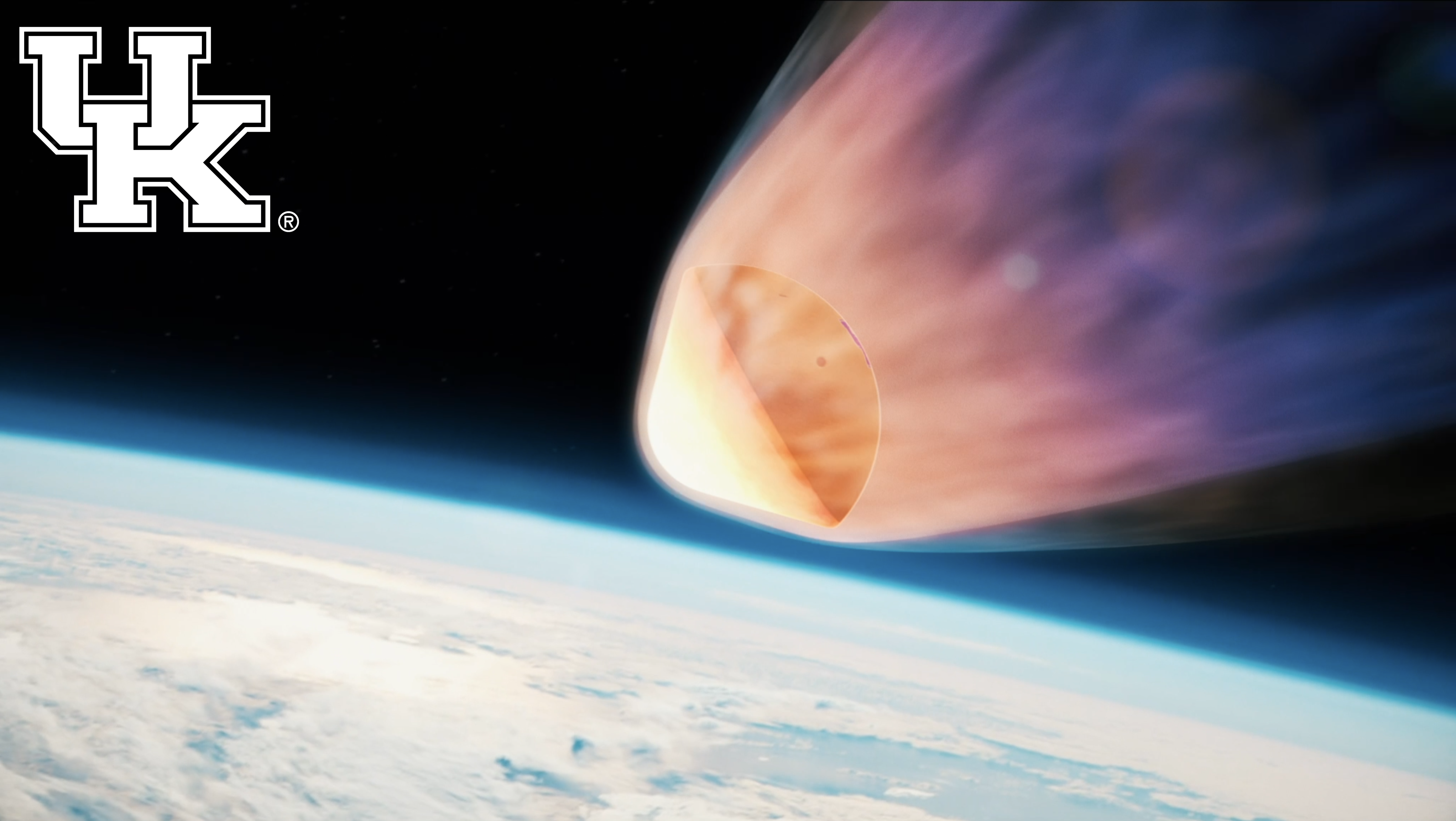Departments of MAE and ECE make history with 5 capsules' successful return from space

On July 13, the Departments of Mechanical and Aerospace Engineering (MAE) and Electrical and Computer Engineering (ECE) in the UK Stanley and Karen Pigman College of Engineering hosted a very special type of “watch party.”
A team of student and faculty researchers invited project alumni, the campus community and members of the media to witness the fruits of their space exploration labor as five Kentucky Re-entry Universal Payload System (KRUPS) capsules underwent hypersonic entry as they entered Earth from the International Space Station (ISS).
KRUPS, a set of space capsules worked on by over 100 University of Kentucky students over the years, marks a groundbreaking project in space engineering. These capsules travel to and from Earth and the ISS, and their maiden voyage on December 15, 2021, achieved three historic firsts:
• The first university-built entry capsule to successfully transit a planetary atmosphere.
• The first hypersonic vehicle flown by a university.
• The first 3D-printed heat shield used in an entry mission.
Heat shields are a special component designed to protect a spacecraft from being burnt or overheated by dissipating, reflecting, and/or absorbing heat. The UK capsules were outfitted with special thermal protection systems so that they would be able to emerge from the burning or exploding spacecraft and take a lot of data about reentry back to the research team.
“The capsules are sent to the ISS on a resupply mission, and they remain on board for several weeks until that resupply mission is over. Then, our capsules are placed inside the resupply vehicle, which then undocks from the ISS,” Alexandre Martin, professor of mechanical engineering, explained. “Eventually, that spacecraft is deorbited. The purpose of that is to burn up that device, which is full of trash from the ISS. Everything from the vehicle will disintegrate on entry, but the capsules will survive — that’s what they were designed to do.”
The “watch party” included demonstrations showcasing the journey of KRUPS, from Styrofoam cut-out models to their deployment on the ISS. The project represented a collaborative effort across multiple engineering disciplines, including aerospace, electrical, computer and mechanical engineering.
Over 50 students, colleagues, alumni, family and friends watched in anticipation as there was a chance all five capsules might not make the reentry. However, the crowd erupted in cheers after each capsule made its successful return and all of the individual data was successfully transmitted and received.
UK Suzanne Smith, professor of mechanical and aerospace engineering, noted the excitement surrounding this historic moment as she told the crowd they were the first in the world to see the successful return of the KRUPS capsules.
The University of Kentucky is the only university that has had a successful hypersonic reentry, a testament to the leading role the Department of Mechanical and Aerospace Engineering plays in hypersonic research and space exploration.

